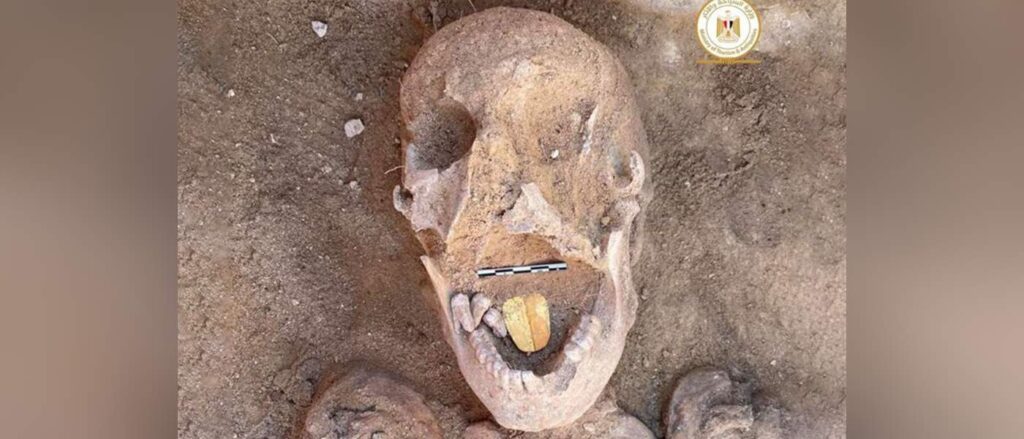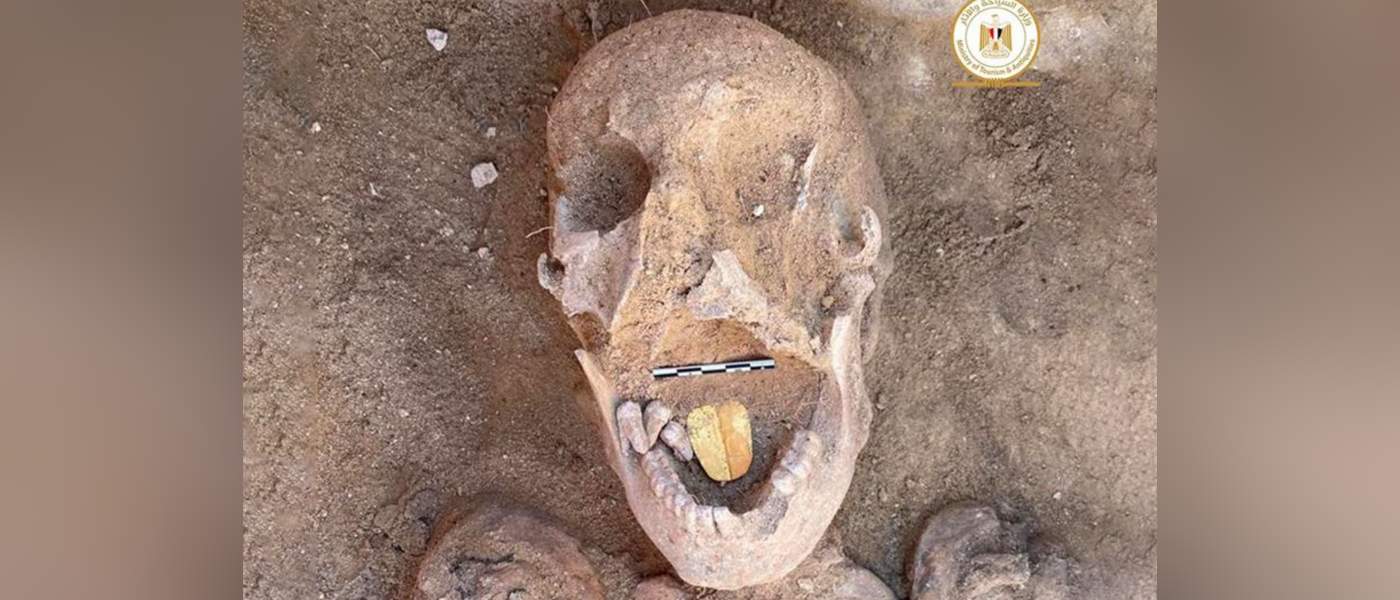
The English phrase about someone being “silver-tongued” clearly runs cross-culturally, as recently a set of mummies were unearthed in Egypt, and one was buried with a golden tongue.
The mummies date to the Greco-Roman period of Egypt after it had come under the thumb of the Northern Mediterranean following the conquests of Alexander the Great, and were found in gilded sarcophagi buried in rock-cut “wall-hole” tombs in the Temple of Taposiris Magna in the Classical-Era city of the same name.
Within these small chambers, the mummies were in a poor state of preservation, which highlights, according to a press release from the Ministry of Tourism and Antiquities, the characteristics of mummification in the Greek and Roman periods.
A gold foil amulet, shaped in the form of a tongue, was found placed in the mouth of a mummy in a special ritual to ensure their ability to speak before the Osirian court in the afterlife.
Osiris was the god of the underworld, and it would be considered vital for people to have a way to speak with him. It’s not clear, but the gold tongue might have been related to that idea, although Smithsonian brought up that perhaps the deceased had a speech impediment.
The two most important mummies were wrapped in golden bonds of papyrus. One bore decorations characteristic of Osiris, while the other wore an Atef crown, sporting horns and a coiled cobra around the head, and a falcon design on their chest to honor the god Horus.
RELATED: Archaeologists Discover ‘Dazzling’ 3,000-Year-old Egyptian City, Left ‘As if it were yesterday’
The discovery was made by a joint Egypt-Dominican team, led by Dr. Kathleen Martinez.
They also discovered eight marble masks depicting faces of the Roman and Greco influence in the region with striking detail, and a near-body-length female funerary mask.
“In the last 10 years, the mission has found several important archaeological finds that have changed our perception of the Temple of Taposiris Magna,” read the statement on the Ministry’s website. “A number of coins bearing the name and image of Queen Cleopatra VII were found inside the temple walls, in addition to many parts of statues.”
HELP the Dazzling News Stick Out by Sharing This Story…




















